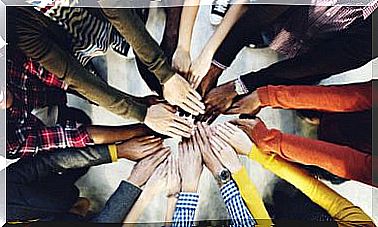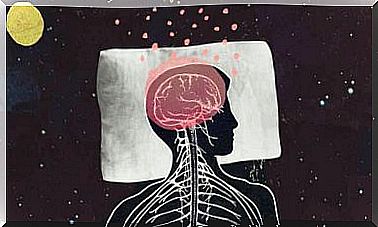The Importance Of Emotional Communication

Numerous studies on natural nurturing and attachment have highlighted the importance of physical contact from birth. Caresses and hugs have a special power, the power to communicate affections and feelings, which, from birth, the baby knows how to understand, receive and internalize. This is how emotional communication develops in childhood.
That is why many hospitals practice skin-to-skin of the mother with her baby from the moment of birth, to provoke the mammalian imprint of attachment and the recognition of its main reference.
Communication without interference
There are several ways of communicating, on the one hand, verbal communication, which transmits through words and non-verbal communication, which is expressed through gestures, postures, tone of voice, timbre, etc … And furthermore, we could say that there is another way of communicating, emotional communication, one that transmits emotions, feelings and desires, and without a doubt, this is through physical contact.

In our culture, as in many others, the kiss is used as part of the cordial greeting between two known people or not, and this social protocol has lost the affective component that it has in essence, when it comes to the public sphere and Social.
However, kissing a loved one, or your partner, recovers the affective component, which is expressed on the most intimate plane. The caresses also acquire an affective and sensual sense, in the most intimate and private plane, being an emotional language in themselves. And hugs are the only gesture that has transcended the social and public plane, maintaining the affective component, and the expression of wishes.
Personal zones in emotional communication
In interpersonal relationships, there are several spaces or areas where we can interact. In the first place, the public area, where you interact with several people at the same time, for example, when we give a conference, and we are located at a distance of approximately 3.5 m to 7 m.
On the other hand, we have the social zone, where we interact with one or two unknown people, approximately between 1.20 m and 3.5 m away. Then, we find the personal zone, which is the distance to shake hands or to hold a public conversation, approximately between 45 cm and 1.20 m.
And finally, the intimate area, where few people access, since it is an area reserved for people of the most intimate plane, where interactions are based on physical contact, at distances of 45 cm or less. It is in this intimate space where the different options for emotional communication arise through physical contact, sometimes on a social and public level, and on others, on a private level, such as love relationships.

But without a doubt, maintaining physical contact is entering the intimate area, where a person is most vulnerable, and where the intrusion of a person to whom we have not given access, will make us feel invaded, attacked and little respected. It is precisely for fear of this happening that we put a barrier that prevents access to all those not chosen for it, relegating them to the personal area, absent from physical contact.
Physical contact, source of knowledge and empathy
Emotional communication through physical contact has a strong potential for interpersonal relationships, as it helps us feel more about the other person, thus practicing empathy and respect for their emotions and feelings more naturally.
Opening our intimate area more often, would allow us to know the most sensitive, emotional and human level of people, thus breaking barriers or screens that sometimes prevent us from understanding, respecting or feeling loved.
Living the experience of physical contact with receptive people, deepens the meaning of life and human relationships. Well, a single gesture, without words, allows us to feel much more than with a speech, and therefore, we will understand in just an instant, that we are part of that person’s life, and that we are not alone.









